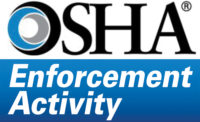NIOSH tool can help enhance aerial lift safety

Whether they’re scissor lifts, boom lifts or some other kind of powered, mobile platform used to elevate workers to various heights, aerial lifts are very useful – and potentially dangerous.
Aerial lifts can be found at construction and telecommunications job sites and in warehouses. They’re used for everything from painting, drywall installation, maintenance, moving materials – even changing lightbulbs. They’re mobile and can easily be deployed to jobsites. They involve minimal setup time. For these reasons, aerial lifts are often used instead of scaffolding.
However aerial lifts can expose workers to fall hazards. Additionally, their use in inclement weather and high-traffic worksites creates other hazards, including crushing/trapping, electrocutions, and tip overs.
Proper safeguarding can reduce or eliminate injury events.
Hazard simulator can improve safety
NIOSH has developed a free Aerial Lift Hazard Recognition Simulator to help prevent aerial lift injuries. It provides realistic workplaces with multiple dangerous hazard types that scissor and boom lift operators can navigate from the safety of a computer. Experienced operators can use the simulator to refresh their knowledge, and new operators can familiarize themselves with hazards they may encounter on the job.
Of course, NIOSH cautions employers that using the simulator is not a substitute for required training to operate aerial and boom lifts.
The NIOSH Aerial Lift Hazard Recognition Simulator can be launched from your computer.
Standards:
Looking for a reprint of this article?
From high-res PDFs to custom plaques, order your copy today!









.jpg?t=1721257160)